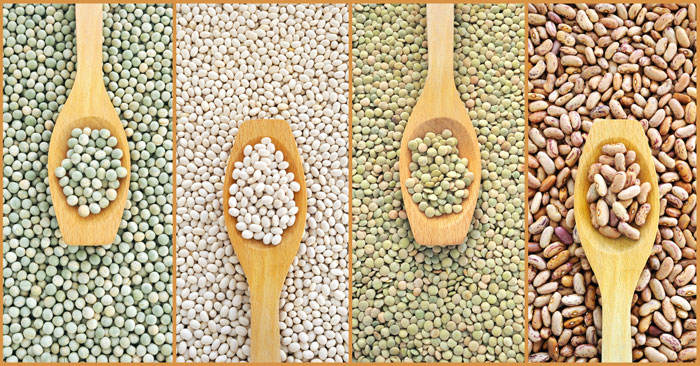
Written By: Sofia Layarda, MPH
Title: Master of Public Health
Alumni: University of California, Berkeley
Last Updated on:

Beans as a group have demonstrated many health benefits. But beyond red kidney beans in chili or black beans in tacos, what lesser-known beans are out there, and which types of dishes are they best suited to?

Table of Contents
Typically found in the Asian section of your grocery store, dried mung beans are oval and are olive-green (with skin on) or yellow (with skin off). These tiny legumes are popular in the cuisines of China, South Asia (e.g., Bangladesh, India, Pakistan) and Southeast Asia (e.g., Thailand, Vietnam, Indonesia, the Philippines). North Americans are probably most familiar with the sprouted form of mung bean – the “bean sprouts” found in Chinese stir-fried noodles or Oriental-style salads, but mung beans are found in many cooked traditional dishes, both savory and sweet. Filipinos make a mung bean stew with shrimp or fish, while Chinese and many Southeast Asian cuisines include a dessert drink or soup from mung beans cooked with sugar, water or coconut milk, and ginger or pandan leaves. Mung beans can also be cooked into pancakes or turned into a sweet paste and used as a pastry filling. Mung bean starch is also made into glassy noodles.
Listed by the US Dry Beans Council as one of the beans grown in the United States, baby limas are creamy-colored and have a buttery flavor. (“Non-baby” lima beans are also called butterbeans.) They can be used in stews, soups, and casseroles, or simply cooked with seasonings, such as these Baby Lima Beans Braised in Lemon. If you prefer a thicker, creamier-tasting soup, but don’t want the extra fat that comes from added cream, puree about a cup of the lima beans called for in the recipe and add the pureed beans back into the soup.
Also known as broad beans, fava beans are in season in the spring. They have a long history dating back to Roman times as a staple, and are regularly found in Middle Eastern dishes. For example, a dish called ful mesdames (alternate ful madames or ful medames) is a popular Egyptian fava bean dish eaten for breakfast, made heartier when served with eggs. Fava beans can also be served with potatoes and greens, as in this Mashed Fava Beans with Potatoes and Chicory.
You can use frozen or canned fava beans for ease of preparation, but true enthusiasts claim the flavor does not compare to fresh fava beans. When shopping for fresh beans, choose the farmers’s market over the grocery store, as they start to lose their flavor once picked. Traditional preparation of fresh fava beans is rather time consuming, as they have to be shelled, and then each individual bean’s protective “skin” removed before they can be cooked and eaten. However, a new trend is to grill the beans and serve them right from their pods with the skin on.
Anasazi beans were cultivated by the ancient Pueblo civilization in the American Southwest and are related to pinto beans. They have a shape like kidney beans, but with white and purple speckles for color. Not surprisingly, they do best in dishes with a Southwestern twist, such as tamales and enchiladas, instead of soups. A simple way to prepare anasazi beans is to make frijoles.
We know that beans and lentils collectively offer many health benefits, but if you are tired of the same beans, these lesser-known ones give you a chance to experiment and find new favorites.
Alumni: University of California, Berkeley – Sofia believes in bringing back fun and pleasure into everyday eating. She loves cooking, and is constantly experimenting with ingredients, creating recipes and trying them out on family and friends. Her latest interest lies in finding realistic and practical ways of environmentally-friendly food/eating habits.
beans, grocery aisle, vegetarian